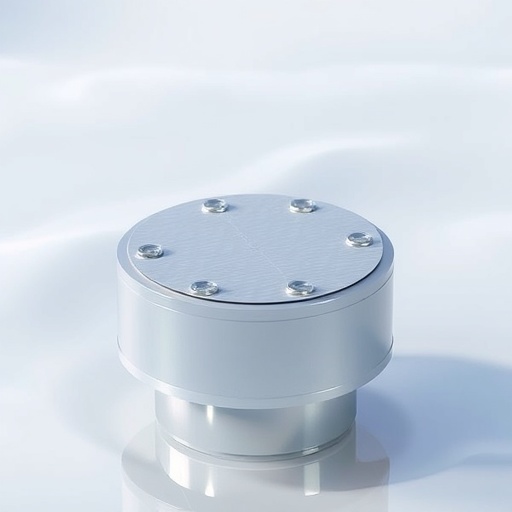Research teams across the globe are relentlessly striving to harness hydrogen as a clean, sustainable energy source. One of the most promising avenues being explored is seawater electrolysis, a method that directly utilizes ocean water for hydrogen production, mitigating the challenges associated with freshwater scarcity. A recent breakthrough emerging from the Korea Institute of Materials Science (KIMS) has the potential to significantly advance this field. Dr. Juchan Yang and his team have developed an innovative composite catalyst utilizing a novel material known as MXene. This development could pave the way for more efficient and durable hydrogen production systems that leverage seawater.
The conventional approach to water electrolysis involves the use of freshwater, which is both resource-intensive and costly. As concerns over water resources multiply, the feasibility of utilizing seawater has garnered increasing attention. However, one significant hurdle remains: the chloride ions present in seawater, which can corrode the electrodes used in electrolysis, ultimately reducing their lifespan and affecting performance. This corrosion issue has historically hindered the practical application of seawater electrolysis technology.
Dr. Yang’s research team tackled this pressing challenge head-on through the incorporation of MXene, a two-dimensional nanomaterial noted for its exceptional electrical conductivity. Its unique structure makes MXene an ideal candidate for use in electrochemical applications, including as an electrode material. However, MXene faces its own set of challenges, primarily due to its high reactivity with both oxygen and water, leading to oxidation that compromises its stability and usability in long-term applications.
To counteract these drawbacks, the researchers intentionally oxidized the MXene to foster a more stable conductive framework. By employing a high-energy ball milling technique, they combined the oxidized MXene with nickel ferrite (NiFe₂O₄)—a known oxygen evolution catalyst. The resulting composite catalyst showcased remarkable improvements, boasting a current density approximately five times greater than that of conventional catalysts. Notably, it demonstrated twice the durability and effectively repelled chloride ions, which is crucial in preventing electrode corrosion.
This combination of enhanced performance and long-term stability signifies a substantial breakthrough in materials science, especially for energy applications. By addressing the corrosion issue inherent in conventional seawater electrolysis materials, Dr. Yang’s team has laid the groundwork for practical implementation in real-world conditions. Advanced testing in an actual electrolysis unit cell confirmed the operational viability of the developed composite. This kind of validation is essential for transitioning laboratory findings into tangible, scalable technologies that can impact the hydrogen production landscape.
The importance of this research cannot be overstated. It not only addresses a critical limitation of traditional catalyst materials but also provides a pathway for the development of hydrogen production systems that can operate efficiently in seawater conditions. This has significant implications for global energy strategies aimed at reducing carbon emissions and promoting sustainable practices. The ability to produce hydrogen fuel from seawater could contribute significantly to developing a hydrogen economy, particularly in coastal regions where freshwater resources may be limited.
The collaborative aspect of this research is also noteworthy. In conjunction with Professor Hyun-Kon Song’s team at the Ulsan National Institute of Science and Technology (UNIST), KIMS has leveraged joint expertise in energy and materials research to explore a sustainable hydrogen solution. This partnership exemplifies the synergy that can arise when varied disciplines unite towards a common goal—advancing technology while addressing urgent global challenges such as climate change and sustainable energy.
Dr. Yang encapsulated the essence of their findings by stating the significance of tackling chloride ion issues using novel materials like MXene. This sentiment reflects a shift toward innovative thinking in materials science, where finding solutions to existing problems is only as effective as the materials developed to overcome them. The ongoing dedication to follow-up research indicates a commitment to refining and eventually commercializing this technology for wider applications.
Additionally, this research has been supported by critical funding from the Korea Institute of Energy Technology Evaluation and Planning (KETEP) and the National Research Council of Science & Technology (NST), which underscores the importance of institutional backing in advancing scientific innovation. Their collaboration has enabled thorough exploration and validation of the developed materials, ensuring that findings are not only published but can also translate into actionable applications.
In summary, the innovative developments in seawater electrolysis technology spearheaded by Dr. Yang’s team highlight a pivotal step towards making hydrogen production more sustainable and efficient. This research could significantly hasten the adoption of seawater electrolysis on a practical scale, enabling countries worldwide to harness local ocean resources for clean energy. This advancement may transform the way hydrogen is produced and contribute to global efforts to mitigate climate change. As this technology matures, it will undoubtedly play a central role in shaping the energy landscape of the future.
Subject of Research: Seawater Electrolysis and Catalyst Development
Article Title: Durable Seawater Electrolysis through the Synergistic Effect of Oxidized MXene/Nickel Ferrite Composite Electrocatalyst
News Publication Date: 30-Jun-2025
Web References: KIMS
References: ACS Nano
Image Credits: Korea Institute of Materials Science (KIMS)
Keywords
Seawater Electrolysis, MXene, Hydrogen Production, Electrocatalyst, Chloride Ions, Corrosion, Materials Science, Sustainable Energy, Clean Technology, Nickel Ferrite, Ocean Resources, Climate Change
Tags: advancements in hydrogen production systemschallenges in freshwater scarcityclean hydrogen energy solutionscorrosion resistance in electrolysisdurability of electrode materialshydrogen production from seawaterinnovative catalyst developmentMXene electrode materialsocean water utilization for energyseawater electrolysis technologysustainable energy sourcestwo-dimensional nanomaterials in energy





